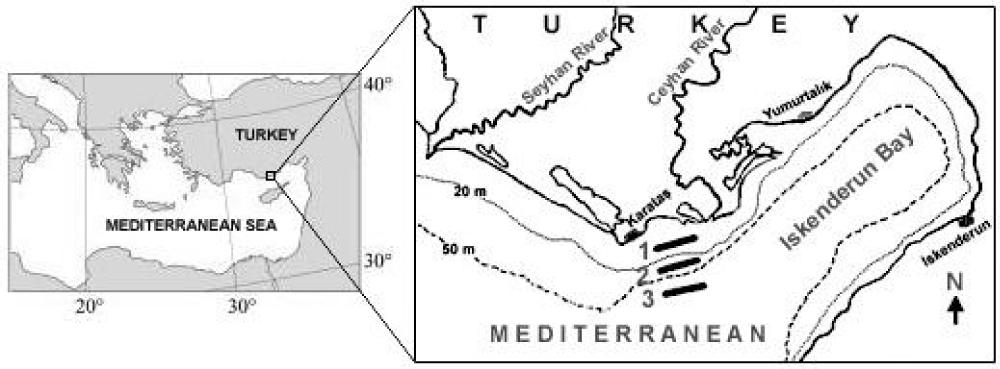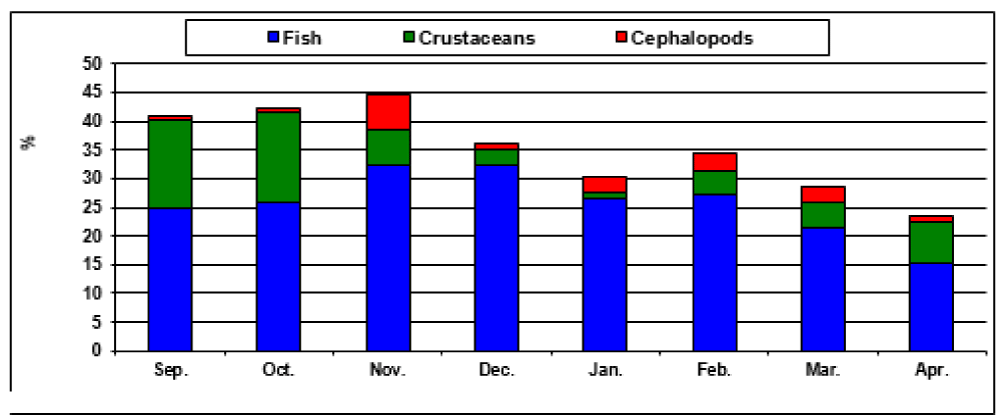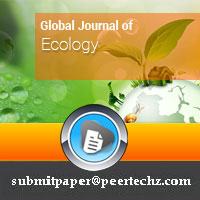Global Journal of Ecology
Bottom Trawl Discard off the Karatas (Northeastern Mediterranean, Turkey)
Erdogan Cicek1* and Dursun Avsar2
1Department of Biology, Faculty of Art and Sciences, Nevsehir Haci Bektas Veli University, 50300, Nevsehir, Turkey
2Çukurova University, Faculty of Fisheries, 01330, Balcali/Adana, Turkey
Cite this as
Cicek E, Avsar D. Bottom Trawl Discard off the Karatas (Northeastern Mediterranean, Turkey). Glob J Ecol. 2025;10(1):004-007. Available from: 10.17352/gje.000109Copyright
© 2025 Cicek E, et al. This is an open-access article distributed under the terms of the Creative Commons Attribution License, which permits unrestricted use, distribution, and reproduction in any medium, provided the original author and source are credited.This study was carried out in 2002 and 2003 off the Karatas, located along the northeastern Mediterranean coast of Turkey. The deep trawl net was operated with a one-hour haul duration at three stations. During the study period, based on species, a total of 90 fish, five cephalopods, and 16 crustaceans were caught. On average, 37.9% of the total catch was discarded. The discard proportion of the total catch and the mean discard for each station varied monthly, ranging from 23.4% to 44.5%, and in each station as 13.2%, 21.4%, and 3.3% for Station I, Station II, and Station III, respectively. The main component of the discard was fish (68.6%), followed by crustaceans (26.7%) and cephalopods (4.7%). Among them, the most important discard was a crustacean species, namely Charybdis longicollis (9.5% of the total catch and 25.1% of the discard biomass). Despite its insights, the study is limited by temporal and spatial scope, indicating a need for broader, year-round assessments and expanded ecological monitoring in future research.
Introduction
The Mediterranean fisheries are highly diverse in terms of species and fishing gears used. Bottom trawl net fisheries allow the collection of a large number of species living close to the soft bottom; while some of these species have commercial value, others do not. Therefore, the Mediterranean fisheries were mentioned by Caddy [1] as multispecific. Additionally, in the northeastern Mediterranean (northern Levantine Basin) division, fisheries are conducted on the continental shelf, mostly in the 0 m - 100 m depth range and reaching a maximum depth of more or less 200 m [2]. Moreover, a key aspect of this area is that trawl operations have no specific target species, and fishermen target species with high commercial value. The discarded fraction is composed of unmarketable species or size groups of low commercial value because of legal obligations. Indeed, Alverson, et al. [3] reported that commercial fishing has been estimated to produce annually 27 million tonnes of discards worldwide, with a range of from 17.9 to 39.5 million tonnes. These estimates are based on a review of over 800 papers.
Several studies have examined trawl fisheries and catch composition in the northeastern Mediterranean-northern Levantine Basin [2,4,5]. A study related to plastic materials retained in the deep trawl net in the continental shelf region of the northern Levantine Basin was carried out by Bingel, et al. [6]. While the landings and discard composition of the bottom trawl fishery in the same region have not been analysed in detail, Therefore, the main scope of the present study is to analyse the species composition of the bottom trawl by-catch and discard off Karatas, which is located at the northwestern entrance of the Iskenderun Bay.
Material and methods
This study was carried out in February, March, April, September, October, November, December 2002, and January 2003 off Karatas. The materials were obtained at monthly intervals with a one-hour haul duration using a commercial deep trawl net with a stretched mesh size of 22 mm (knot to knot) from the three stations, as shown in Figure 1. All hauls were performed during daylight. All yielded organisms by trawl were identified and then weighed. The legal regulations regarding the size limitations of commercially fished species were prepared by the Ministry of Agriculture and Forestry and the "Communiqué Amending the Communiqué No. 5/1 on the Regulation of Commercial Fishing for Fisheries" entered into force after being published in the Official Gazette [7]. The species collected during the study period were classified into two categories: These are:
- Commercial species—those that are consistently marketable (only small individuals were discarded) and
- Discarded species—those that were always in the discarded fraction.
Results
During the study period, based on species, a total of 90 fish, 16 crustaceans, and five cephalopods were identified in the total catch. Among them, a total of 48 fish, seven crustaceans, and four cephalopods can be categorized as commercial species, those that are consistently marketable (Table 1). Other 42 fish, nine crustaceans, and only one cephalopod were separated as discarded species, those that were always in the discarded fraction (Table 2).
As much as 645.1 kg biomass were obtained from 24 hauls during the 24 fishing hours. Fish represented the major proportion with respect to the total catch (79.5%), followed by crustaceans (13.5%) and cephalopods (7.0%). monthly variation in total catch and discard biomass, including its components were seen in Figure 2.
During the study period, the maximum total catch was obtained in September (200.1 kg), which is at the beginning of the fishing season. This value declined progressively from September until the end of the fishing season, and the minimum total biomass was obtained in March, with a biomass of 37.3 kg. A similar trend was observed for monthly changes in discarded fractions. Indeed, the maximum discarded value was obtained in September (82.1 kg), and then this value decreased until the end of the fishing season (10.7 kg) in March, with a mean value of 30.5 kg (SD = 25.9 kg).
Monthly changes of the discarded fractions as a percentage of the total catch were shown as a percentage in Figure 3. As seen in Figure 3, the minimum and maximum discarded proportions occurred in April and November with values of 23.4% and 44.5%, respectively. Fish constituted the major proportion with respect to the total discard (68.6%), followed by crustaceans (26.7%), and cephalopods (4.7%). Among the most important discards was a crustacean species, namely Charybdis longicollis (9.5% of the total catch and 25.1% of the discarded biomass).
Discarded fractions as a percentage of the total catch for each station were shown in Figure 4. As can be seen from Figure 4, over half of the total discard originated from Station II (51.6%), followed by Station I (32.5%), and Station III (18.4%). The significance test result obtained from the two-tailed analysis of variance showed a significant variance (p < 0.05) in the discarded value among the stations in percentage. Fish were the main component of discards at all stations. Most of the discarded cephalopods were provided by the deepest station (Station III, 3.8%); and the discarded proportion of cephalopods increased from the shallow station (Station I, 0.65%) to the deep one (Station III). In contrast to the cephalopods, the discarded fraction of fish decreased with increasing depth. Moreover, most of the discarded crustaceans were obtained at Station II. In this station, the value was approximately ten times higher than in the other two stations.
Discussion
On average, 37.9% of the total catch was discarded during the study period. Alverson, et al. [3] estimate that world fisheries produce one-fourth of the global catch discard (27% of the global catch). The percent discard of Greek fisheries was calculated at 44% (ranging from 39% to 49%) by Machias, et al. [8]. The estimated ratio in the present study was higher than global discard, but a close similarity can be seen with Greece’s coasts.
During the study period, it was observed that, except for some octopuses and crabs, nearly all organisms died when discarded. Indeed, according to Bozzano and Sarda [9] and Hill and Wassenberg (1990) calculated that nearly all fish, about half of the non-commercial crustaceans, and 98% of the non-commercial cephalopods are dead when discarded.
It is observed that, after sorting the catch on the shipboard, when unwanted organisms are returned to the sea, the discards are eaten by ship-following seabirds. Although large quantities of discards were consumed by seabirds, probably only a minor portion of the waste re-entered the ecosystem as organic material. According to Bozzano and Sarda [9], and as noted by Camphuysen, et al. (1995) reported that more than 70% of fishery discards were consumed by seabirds.
Beyond seabirds, discarded bycatch serves as an opportunistic food source for various marine fauna, including cetaceans and elasmobranchs. Dolphins and toothed whales frequently follow fishing vessels, taking advantage of accessible discards, especially in regions with intense fishing activity. Similarly, rays and sharks may scavenge benthic discards that settle on the seafloor. However, the extent of this behavior in the northeastern Mediterranean remains poorly understood, necessitating focused observation and telemetry studies to clarify their role in discard recycling.
Discarded fish were the highest in Station I. This finding may be attributed to the tendency of juvenile fish to inhabit shallow waters in shallow water because of the food availability advantage of seashores [10]. Because the most important discarded species (C. longicollis) prefers soft, muddy substratum due to their feeding habits [11] and the bottom of Station II, most of the discarded crustaceans were obtained from muddy substrata.
Limitations and recommendations
This study provides valuable insights into species composition and discard patterns in bottom trawl fisheries off the Karatas coast but has several limitations. Sampling was restricted to eight non-consecutive months within a single annual cycle, limiting the ability to capture seasonal and interannual variations in species distribution and discard rates. Spatial coverage was confined to three stations within a narrow depth range, potentially overlooking broader ecological dynamics. The use of a single trawl net design and vessel introduces methodological uniformity that may not reflect commercial variability. Future research should expand both temporal and spatial scales, include replicate hauls across seasons and years, and incorporate environmental factors like substrate composition and water temperature. Additionally, the impact of discards on non-avian scavengers, such as cetaceans and elasmobranchs, remains underexplored and warrants further study. Integrating ecosystem-based approaches and modeling discard fate could enhance our understanding of trawl fishery impacts and support more sustainable management practices.
Ethical statement
This work is based on commercial fish species, and the specimens were collected from a commercial catch. Therefore, ethical approval was not required.
Author contributions
E.Ç., D.A. developed the research idea and wrote the manuscript with input from all authors; E.Ç., D.A. collected samples and contributed to partial data analysis; E.Ç., analysed data and drew graphs; E.Ç., D.A. contributed to the data analysis and to writing the manuscript.
Data availability statement
The data underlying this article will be shared upon reasonable request to the corresponding author.
This study has been supported by the Scientific Research Project Department of the Cukurova University, No: SUF2002BAP7. This study was presented orally at the A Regional Workshop on Fisheries, Aquaculture and Environment. 29–30 April 2003, Tishreen University-Lattakia, Syria.
- Caddy JF. Some future perspectives for assessment and management of Mediterranean fisheries. Sci Mar. 1993;57(2–3):121–30. Available from: https://www.fao.org/4/w0509e/w0509e03.pdf
- Bingel F. Final report of the project on fishing areas of coastal fisheries located on eastern Mediterranean. Erdemli: ODTU, Erdemli Marine Science Institute. 1987;312. (in Turkish).
- Alverson DL, Freeberg MH, Pope JG, Murawski SA. A global assessment of fisheries bycatch and discards. Rome: FAO. 1994; FAO Fish Tech Pap No. 339:233. Available from: https://openknowledge.fao.org/items/8250fcd5-b3a8-44e3-9d12-0085923ca731
- Bingel F, Avsar D, Unsal M. A note on plastic materials in trawl catches in the north-eastern Mediterranean. Meeresforsch. 1987;31:227–33. Available from: https://www.researchgate.net/publication/284648119_A_note_on_plastic_materials_in_trawl_catches_in_the_north-eastern_Mediterranean
- Bingel F, Ozsoy E, Unluata U. A review of the state of the fisheries and the environment of the Northeastern Mediterranean (northern Levantine Basin). Rome: FAO. 1993; Gen Fish Counc Med Stud Rev No. 65:74. Available from: https://books.google.co.in/books/about/A_Review_of_the_State_of_the_Fisheries_a.html?id=XeKi_xLfBV0C&redir_esc=y
- Japan International Cooperation Agency (JICA), Ministry of Agriculture and Rural Affairs, General Directorate of Agricultural Production and Development (Turkey). Marmara, Aegean and Mediterranean survey report of demersal fishery resources. Ankara: JICA. Turkish. 1993.
- Official Gazette. Communiqué Amending the Communiqué No. 5/1 on the Regulation of Commercial Fishing for Fisheries. Gazette No. 31221. 2020.
- Machias A, Vassilopoulou V, Vatsos D, Bekas P, Kallianiotis A, Papaconstantinou C, Tsimenides N. Bottom trawl discards in the northeastern Mediterranean Sea. Fish Res. 2001;53:181–95.
- Bozzano A, Sarda F. Fishery discard consumption rate and scavenging activity in the northwestern Mediterranean Sea. ICES J Mar Sci. 2002;59:15–28.
- Bone Q, Marshall NB, Blaxter JHS. Biology of fishes. 2nd ed. London: Chapman & Hall. 1996;332.
- Galil B, Froglia C, Noel P. CIESM atlas of exotic species – Vol. 2. Crustaceans. In: Briand F, editor. Monaco: CIESM Publishers. 2000;192. Available from: https://www.researchgate.net/publication/364119439_CIESM_Atlas_of_Exotic_Species_in_the_Mediterranean_Vol_2_Crustaceans_Decapods_and_stomatopods
Article Alerts
Subscribe to our articles alerts and stay tuned.
 This work is licensed under a Creative Commons Attribution 4.0 International License.
This work is licensed under a Creative Commons Attribution 4.0 International License.






 Save to Mendeley
Save to Mendeley
